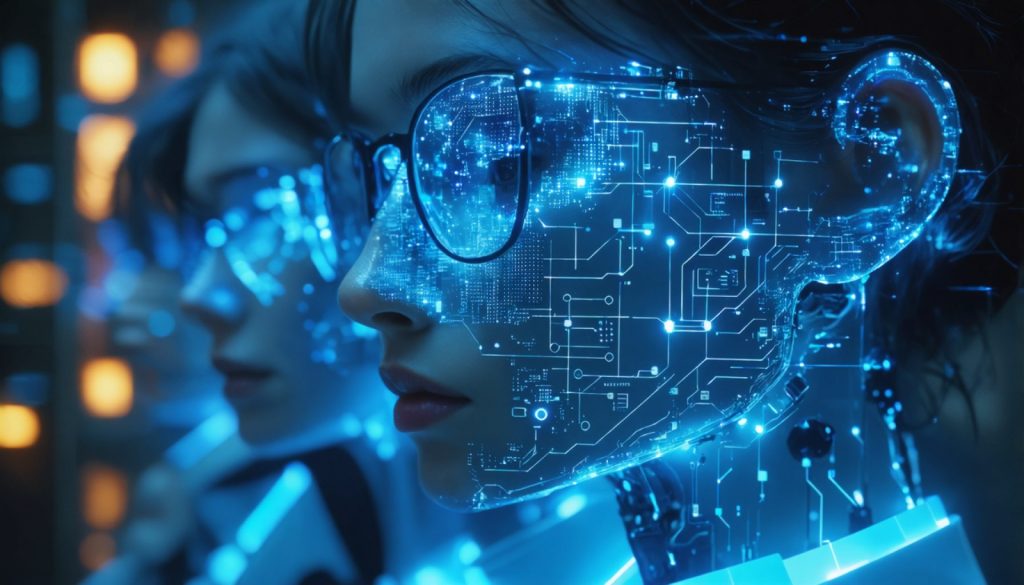
- AI-generated images in the style of Studio Ghibli have sparked debates about authenticity and ownership in digital creativity.
- The rise of AI technologies poses challenges to determining the true origin of creative content, exemplified by cases like the “Chill Guy” meme incident.
- Intellectual property systems are struggling to keep pace with the rapid reproduction capabilities of AI.
- Blockchain technology offers a potential solution to these challenges by providing verifiable and immutable records of digital content origins.
- Features like content-addressable storage and smart contracts in blockchain can help automate licensing and royalties, ensuring creators maintain control over their work.
- The use of blockchain could restore trust and integrity to the creative economy, promoting transparency and rightful attribution.
- Embracing blockchain is essential for preserving innovation and creative expression in an AI-driven digital world.
Ghosts of Hayao Miyazaki’s magical worlds have taken over digital spaces, as AI-generated Studio Ghibli-style images flood timelines across the globe. While these pastel renditions captivate with their charm, they provoke a deeper unease—the invisible hand of AI has recreated these works without consent or credit. This issue is emblematic of a larger quandary in the digital age: an erosion of authenticity and ownership in creative content.
Amid an online landscape where AI can effortlessly mimic any voice or style, the chaos unleashed jeopardizes the clarity of origin. Recently, a significant fallout in the blockchain world exemplified this challenge—a dog meme known as Chill Guy morphed into a viral sensation and a multimillion-dollar token. Yet, the originator, Philip Banks, was blindsided; his accounts hacked and false licensing deals forged in his name. This episode, while dramatic, is just one of countless happenings reshaping digital culture under the stewardship of AI.
As AI continues to harvest data, from ambitious manga to the nuanced tones of beloved voice actors, the systems designed to protect intellectual property are unraveling. We are left in a culture built on fragile assumptions and opaque origins. Traditional enforcement cannot match the speed nor the scale of AI’s endless reproduction.
Enter blockchain, a potential savior in the bid for genuine authorship. It offers more than just a technological edge—it proposes a structural revolution from uncertain to indisputable provenance. Blockchain anchors digital creations onto public ledgers, ensuring that every artist’s fingerprint remains visible and unaltered. By establishing cryptographic guarantees, it transforms the landscape so that any remix, modification, or derivative work is meticulously logged and verifiable.
With blockchain structures such as content-addressable storage and Merkle trees, we create an immutable chain of custody—a ledger that is as indelible as it is transparent. Creators can automate licensing and royalties with smart contracts, maintaining control and securing their dues amid a sea of digital disruption. In effect, blockchain is not a mere technological trend; it is a clarion call for restoring clarity and trust in the creative economy.
The internet, to thrive as a bastion of creativity, must embrace these new foundations. Without them, innovation is stifled and creative expression tarnished. As we stride into an AI-driven era, the choice is stark: let creativity erode under unchallenged technologies or bolster our digital society with systems that honor the origin and attribute rightly. It’s time to let blockchain illuminate the origins and allow creativity to shine unimpeded by the shadows of appropriation.
The Future of Creativity: Balancing AI Innovation with Blockchain Integrity
The Dilemma of AI-Generated Content and Intellectual Property
The rise of AI has led to incredible advancements in content creation, allowing machines to generate art and mimic styles instantaneously. However, this raises significant concerns about authenticity, ownership, and the erosion of traditional intellectual property rights. The recent surge of AI-generated Studio Ghibli-style images is a prime example, showcasing both capability and ethical controversy.
The Role of Blockchain in Protecting Creators
Blockchain technology is emerging as a promising solution to the challenges posed by AI-generated content. By anchoring digital creations onto public ledgers, blockchain ensures that the provenance of creative works is transparent and immutable. The technology utilizes structures like content-addressable storage and Merkle trees to create an indelible chain of custody. This guarantees that every modification or derivative work is meticulously logged and verifiable.
How to Use Blockchain for Creative Protection
1. Digital Provenance: Artists can register their works on blockchain platforms, creating an immutable record of authenticity and ownership.
2. Smart Contracts: Use these automated protocols to manage licensing agreements and royalties, ensuring creators receive due compensation.
3. Transparent Licensing: Through public ledgers, any modifications or derivative works can be tracked, preventing unauthorized use.
Real-World Use Cases
– Digital Art: Blockchain provides a secure platform for artists to sell their work as non-fungible tokens (NFTs), ensuring authenticity and resale rights.
– Music Industry: Artists can use blockchain to track music usage and automate royalty payments, reducing reliance on traditional record labels.
Market Forecasts and Industry Trends
The integration of blockchain in content creation is still in its nascent stages but is expected to grow significantly. The global blockchain in the media and entertainment market is projected to reach $1.54 billion by 2024, highlighting the increasing adoption of the technology to combat digital piracy and protect creative rights.
Challenges and Limitations
Despite its potential, blockchain technology faces several challenges:
– Scalability: Current blockchain networks struggle with processing large volumes of transactions, which could hinder widespread adoption.
– Complexity: The technical complexity of blockchain may deter traditional artists and creators unfamiliar with the technology.
– Regulatory Issues: As blockchain usage grows, so will government regulations, which could impact its implementation.
Actionable Recommendations
– Educate Yourself: Creators should familiarize themselves with blockchain technology and its applications to safeguard their works effectively.
– Experiment with NFTs: Artists can explore NFT marketplaces to mint and sell their art, ensuring provenance and potentially reaching new audiences.
– Collaborate with Tech Experts: To navigate blockchain’s complexities, creators should consider working with technologists to implement these systems.
Conclusion
In an age where AI poses as both ally and adversary to creative industries, embracing blockchain could restore trust in digital content. By prioritizing authentic creation and rightful attribution, we can protect the integrity of creativity in our rapidly evolving digital landscape. For more insights into how these technologies can impact creative industries, visit CoinDesk.
By leveraging these innovative systems, we can ensure a future where creativity thrives free from the clutches of digital appropriation, allowing original works to shine brightest.



